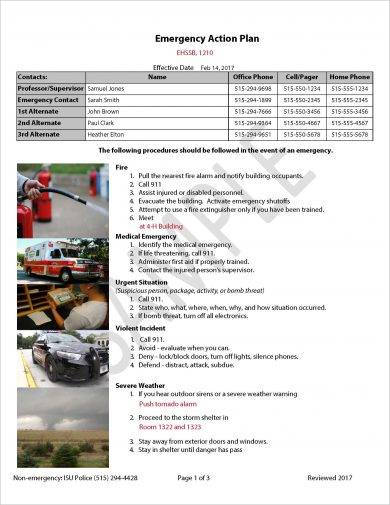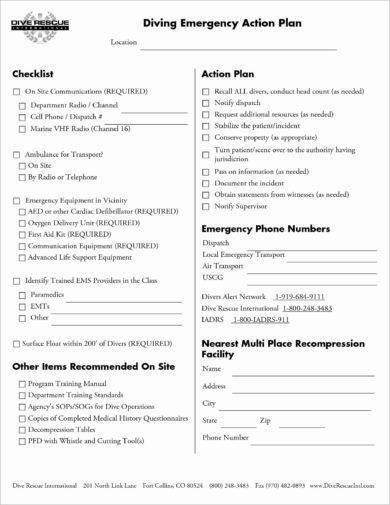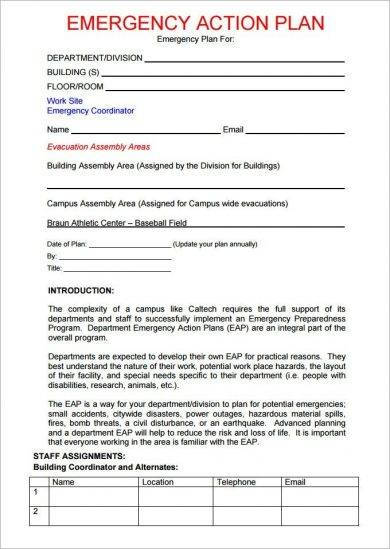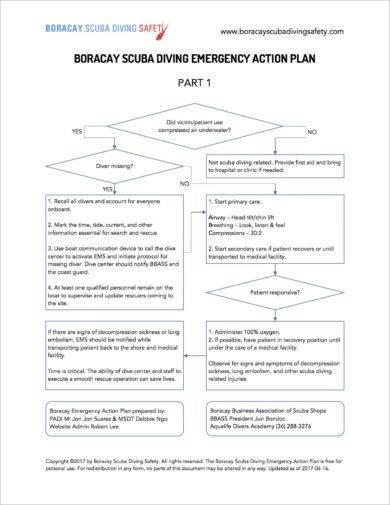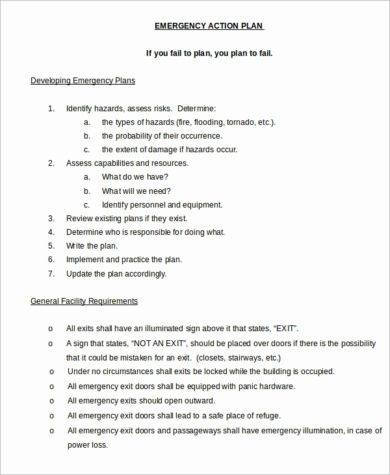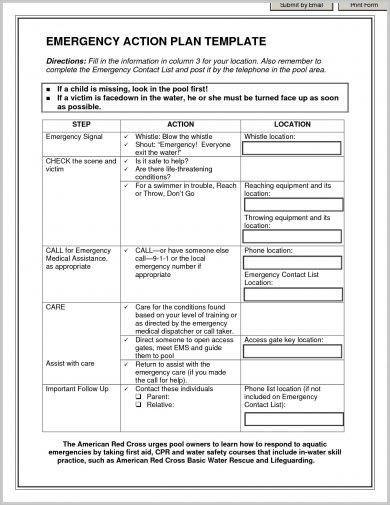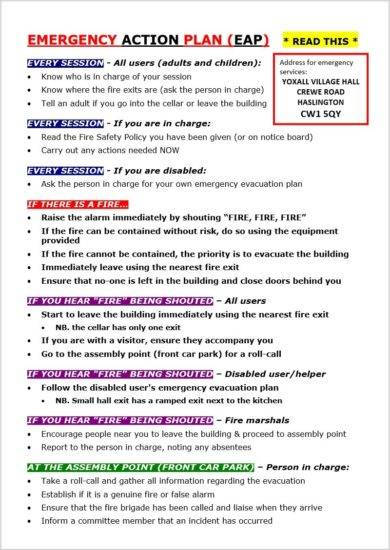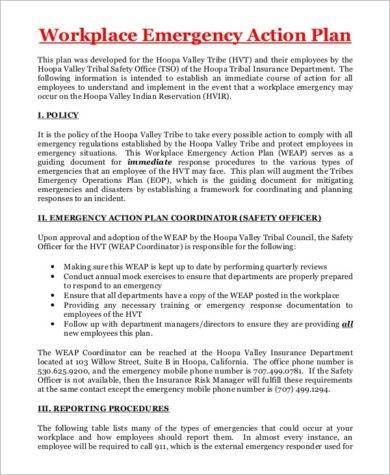26+ Emergency Action Plan Examples to Download
Over the years, many establishments have suffered from major losses in terms of human, material, structural, and financial resources due to unforeseen events caused by man-made and natural calamities. You may also see SMART action plan examples.
Emergency Action Plan Template
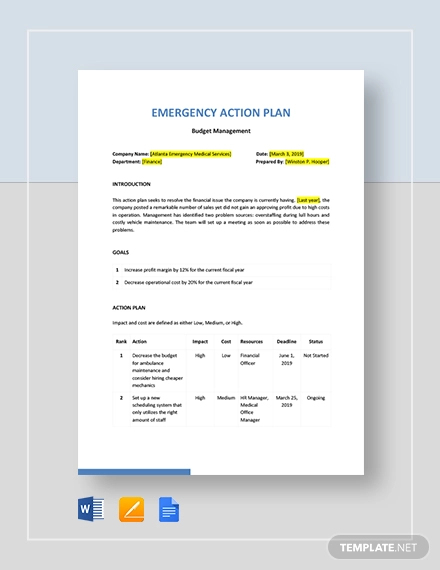
Emergency situations call for quick-thinking actions that must be executed in a calm yet strategic manner. Almost every business needs an emergency action plan to prevent major or minor injuries during accidents and moments of crisis.
But how are emergency action plans created? To fully understand the policies and precautions involving an emergency action plan, let us take a deeper look into what it is and how it is made.
Emergency Action Plan
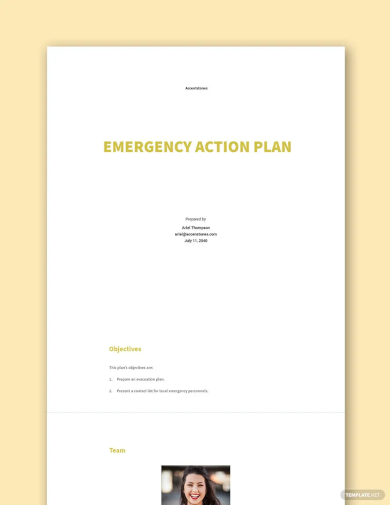
Emergency Action Plan Mind Map Template
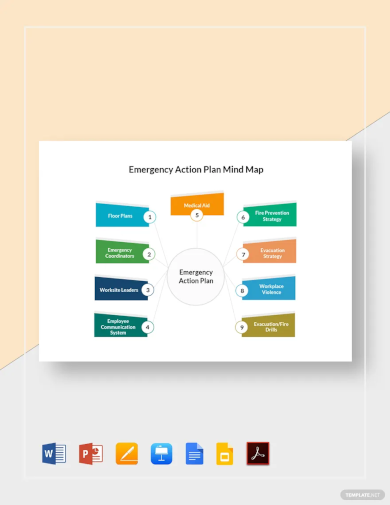
Safety Emergency Action Plan Template
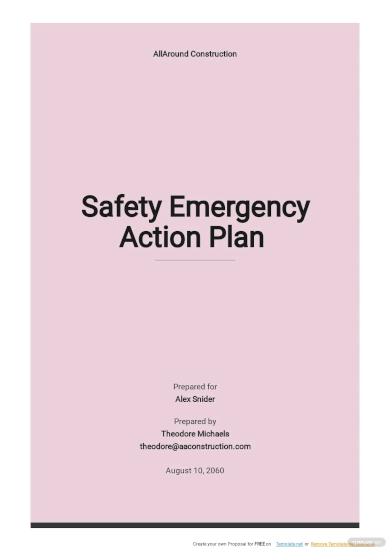
Employee Emergency Action Plan Template

Construction Emergency Action Plan Template
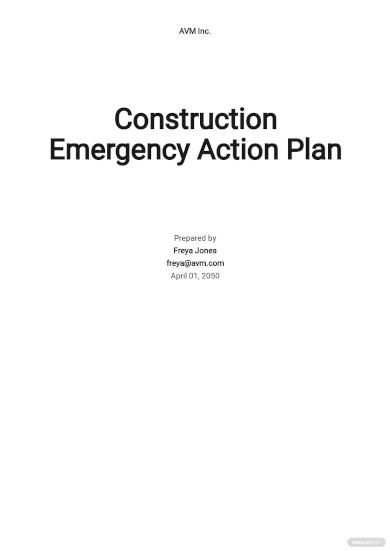
Business Emergency Action Plan Template

School Emergency Action Plan Template
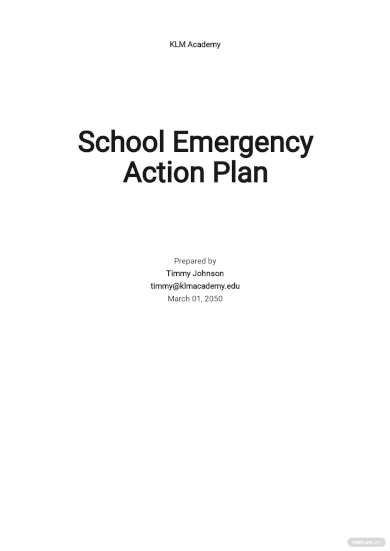
Event Emergency Action Plan Template
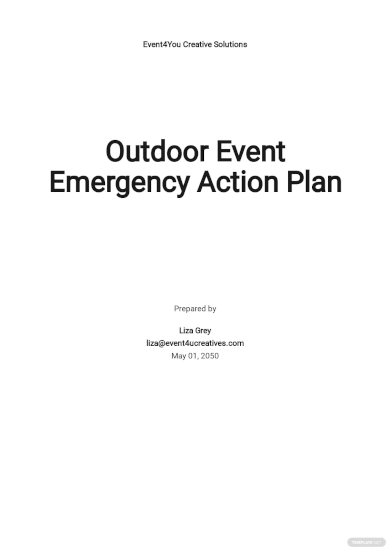
Hotel Emergency Action Plan Template
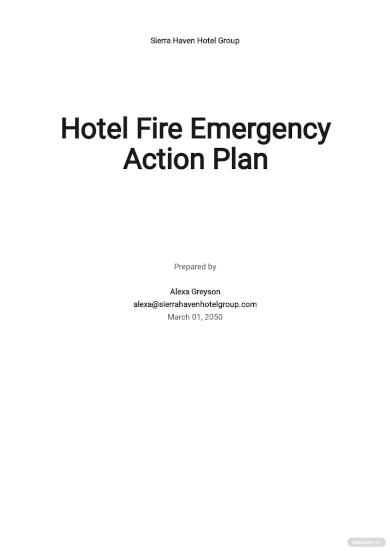
Company Emergency Action Plan Template
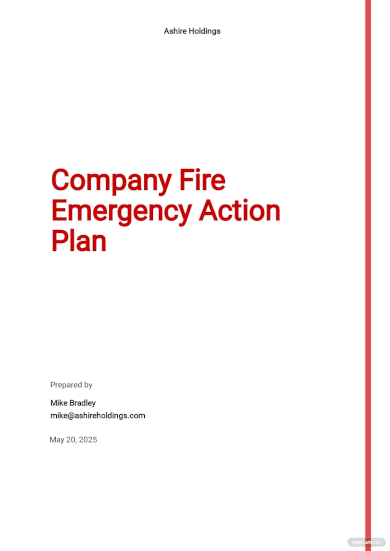
Church Emergency Action Plan Template
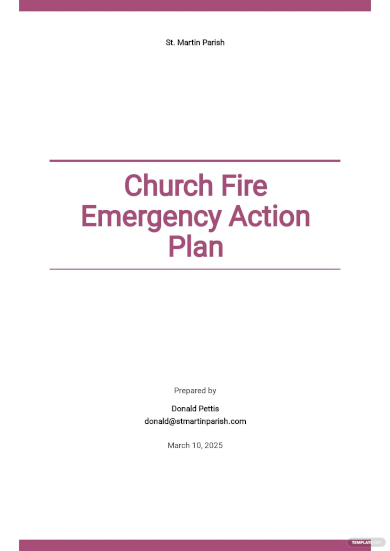
Workplace Emergency Action Plan Template
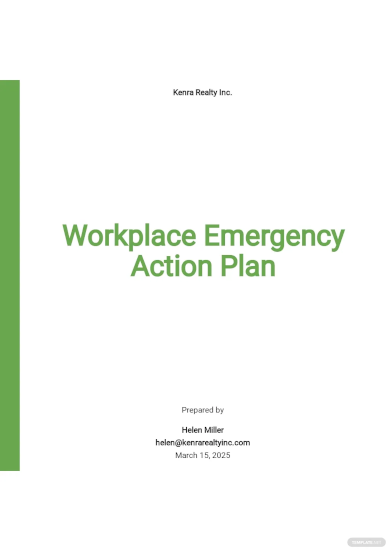
Simple Emergency Action Plan Template
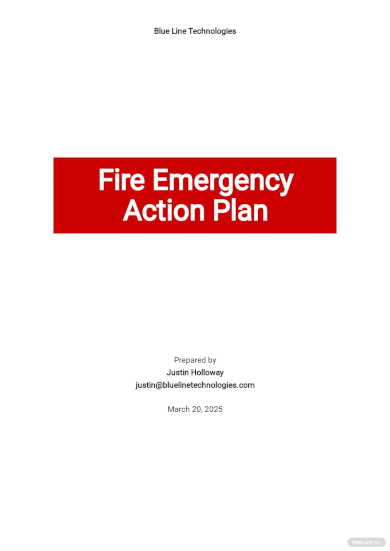
Editable Emergency Action Plan Template
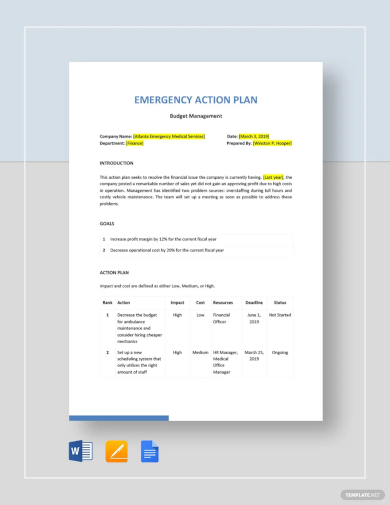
Emergency Management Action Plan Template
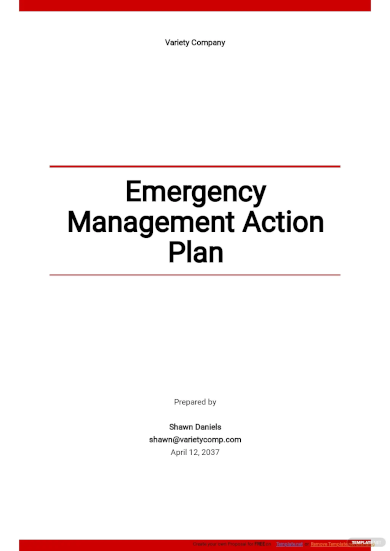
Blank Emergency Action Plan Template
Corporate Emergency Action Plan Example
DAN Emergency Action Plan Example
Understanding an Emergency Action Plan
Imagine being stuck in the eighteenth floor of a twenty-story building during a massive earthquake. Thanks to the building’s sturdy foundation, the establishment does not collapse on the first hit. However, building personnel fear that the structure of the building may no longer hold the amount of weight it carries if major aftershocks follow. Hence, evacuation procedures must be conducted immediately. You may also like employee action plan examples.
But with the number of civilians residing in the building, how can the emergency team, including administrators from companies on each floor, perform a thorough evacuation system in an orderly manner?
With gas leaks, fires, power loss, and potential injuries being some of the hurdles along the way, managers and emergency personnel must be extra careful with their actions to prevent further casualties. Emergency situations can be very difficult to handle, especially when emotions are high and the need to panic prevents people from thinking straight. You may also check out marketing action plan examples.
This is where an emergency action plan comes to play.
What Is an Emergency Action Plan?
An emergency action plan is a written document that tells employees how to act during emergency situations in the workplace. This is a critical requirement designed to meet Occupational Safety and Health Administration (OSHA) standards.
The purpose of such document is to facilitate employer and employee actions during catastrophic scenarios. Some of which include fires, tornadoes, earthquakes, floods, and hazardous material spills. With a well-developed plan and proper training, the management can lessen the chances of individual injury and/or structural damage to the establishment’s facilities.
1. Minimum Requirements
Developing an action plan that deals with possible issues specific to your work environment is actually a lot easier than it seems. When initiating your plan, you would need to evaluate your workplace and describe how employees are likely to respond during urgent situations, while taking into account the work site layout, structural features, and emergency systems as well. It’s also important to keep everyone involved in the process.
The commitment and cooperation of employees are vital to the plan’s success, which is why it’s important to keep everyone involved by asking help from representatives of each department in establishing and implementing your emergency action plan. You might be interested in research action plan examples.
But if you’re running a company with only a handful of employees, then the action plan does not need to be written formally and may be communicated orally.
The plan must also consist of the necessary elements, such as the means of reporting fires and other emergencies, evacuation procedures, first aid or medical duties to be performed, and the names or job titles of those who may be contacted during these events. You may also see sales action plan examples.
2. Evacuation Elements
Do you remember the 9/11 terrorist attacks that tragically struck New York’s World Trade Center on September 11, 2001?
Though the tragedy killed 2,996 people and injured over 6,000 others, many civilians managed to survive the attacks thanks to the evacuation and rescue efforts of building personnel, managers, security agents, first responders, and other witnesses around the area. You may also like project action plan examples.
An organized evacuation procedure is one of the most critical elements of an emergency action plan. It determines the conditions under which an evacuation is necessary (along with when it may be better to shelter in place), a chain of command to order the evacuation, specific procedures including the routes and exits that must be taken, special equipment for employees, and appropriate respirators. You may also check out budget action plan examples.
3. Shelter-in-Place
During certain emergencies that involve a chemical, biological, or radiological contamination, staying indoors is a safer option as opposed to evacuating the building.
These releases may either be accidental, like a leaking tank car of chlorine nearby, or intentional, such as the terrorist attack in Japan in 1995 where members of the Aum Shinrikyo religious cult used simple lunch-box-sized dispensers to release a harmful mixture containing the military nerve agent sarin. You might be interested in team action plan examples.
When selecting a shelter-in-place location within your facility, make sure to choose a room with little to no windows. Local authorities also suggest that companies supply a TV, radio, and food and water system for refugees to use until the area is cleared.
4. Reporting Emergencies
Instead of whipping out your smartphones to record the situation, employees must know how to report emergencies when they happen. Telephones, intercoms, or public address systems can help employees notify other employees about the emergency at hand. The proper authorities like the fire, medical, and rescue services must also be contacted immediately.
5. Fight or Flee?
Oftentimes, this can be a tough decision to make. If a fire breaks out, should employees fight it with a portable extinguisher or simply evacuate to avoid the fumes?
The emergency action plan must indicate the necessary measures that may be taken during certain scenarios. Small fires can be put out quickly by a well-trained employee with a fire extinguisher. However, the employee must also be aware of the steps and hazards associated with fighting fire. It’s important to select a few competent individuals to perform such actions during a time of need to avoid further complexities. You may also see strategic action plan examples.
6. Fire, Rescue, Medical Services
If the situation is too risky for an average individuals to handle, move away and let the professional emergency responders to their job.
A group of well-trained firefighters, paramedics, and other rescue service personnel are usually the first ones to arrive at the scene. Despite their years of experience in the field, they may not know how severe the situation is at first glance. You may also like community action plan examples.
Make sure to provide a run-through of what happened and cooperate as much as you can if they have any questions or concerns that need to be addressed. Information about the building, your employees, and other facilities may also be needed, so ensure that the details provided remain as accurate as possible. You may also check out restaurant action plan examples.
7. Developing and Implementing an EAP
A drafted copy of your emergency action plan is not enough to guarantee the safety of your employees.
When an evacuation is your last option, you will need a team of responsible and highly trained individuals to lead the group. The content of the EAP will simply serve as a guide to educate and assist employees before the actual evacuation. Make sure to consider all the possible evacuation situations and assess your workplace to see if it complies with the emergency standards set by OSHA. You might be interested in project action plan examples.
Diving Rescue Emergency Action Plan Example
Emergency Action Plan for Sports Example
Emergency Action Plan Template
Scuba Diving Emergency Action Plan Example
What to Include in an Emergency Action Plan
An effective emergency action plan, at the bare minimum, should contain the following information:
1. Emergency Coordinators
As an employer, you must designate at least one or more coordinators to help develop procedures; examine various situations; call for medical, fire, or rescue assistance; declare an emergency, evacuation, or shelter-in-place; communicate with neighboring offices or buildings about the emergency; and direct the immediate shutdown of operations. You may also see personal plan examples.
2. Site Leaders
Emergencies can often put an entire workforce under a lot of pressure. In your attempt to remain calm, you cannot control the sense of panic that some individuals are going through. There are have been many stories of chaos during crucial situations that have lead to several casualties in the process.You may also like 90-day action plan examples.
For this reason, you need to assign team leaders to ensure that operations and procedures are observed accordingly. This includes the procedures to be followed by employees assigned to operate critical facilities in the building, as well as the steps involving employee accountability. Training for these leaders must also be arranged to prepare them for unlikely scenarios. You may also check out employee corrective action plan examples.
3. Floor Plans
Medium to large companies that operate in massive office spaces and buildings are highly encouraged to create a floor plans indicating multiple escape routes and refuge areas for employees to be aware of. These floor plans or workplace maps must also be posted in several high-traffic locations around the establishment. A copy must also be provided for first responders to refer to. You might be interested in printable work action plan examples.
4. Employee Communication System
Everyone needs to be on the same page. This is why you need to set up a warning or communication system that will reach each one of your staff members. If you have employees who are hearing impaired or have trouble speaking or understanding English, develop a contingency plan to address their concerns. You can even make use of flashing lights or visual hand signals for directions. You may also see health and safety action plan examples.
5. Accounting for Employees
Look for designated areas away from the workplace that can serve as your emergency grounds. Here, employees can assemble in a particular area to make it easier for team leaders to do a head count.
If anyone is missing, you can immediately inform the response team to look for the given individual. You may even develop a “buddy system” where team leaders or managers from each department are held accountable for their own members. General reports are regarding the number of people present or absent should then be forwarded to a higher authority.
6. Evacuation for Persons with Disabilities
This is a risky factor to deal with, as it usually requires sacrifice and teamwork to carry out successfully. Since self-identified blind, deaf, or disabled employees can only do so much during emergency scenarios, you need to determine how they may be evacuated or taken to refuge areas. You may also check out restaurant marketing action plan examples.
You can opt to assign special members of your team to be responsible for their evacuation procedures, and ask other employees to assist in the process. In most instances, these people are prioritized in the evacuation and must leave the premises before the rest of the staff to avoid any threats that may lead to minor injuries. You may also like risk plan examples.
7. Medical Aid
Unless there is a healthcare facility close by, OSHA requires every establishment to have at least one person onsite to be adequately trained to perform first aid during critical circumstances.This is to treat life-threatening emergencies until the medical response team arrives. For instance, you may have an employee with a severe asthma condition. Along with an asthma action plan, you also need someone to help facilitate in keeping the asthma back under control.
8. Fire Prevention Plan
As part of your emergency action plan, you must also formulate a fire prevention plan to avoid potential triggers before an accident happens. Regular inspections from the fire safety committee or your local fire station may help identify these risks. You may also see business action plan examples.
9. Workplace Violence
Always consider the possibility of workplace violence when creating your EAP. You can choose a specific code word that employees can use whenever faced with a threatening situation.
10. Temporary Employees and Contractors
Apart from your regular staff members, you also need to make sure that temporary employees and contractors are properly notified about these guidelines. You can create a short presentation showing emergency evacuation routes, hazardous substances on-site, and any other information that they need to know about. You may also like corrective action plan examples.
Simple Emergency Action Plan Example
Swimming Pool Emergency Action Plan Example
Village Emergency Action Plan Example
Workplace Emergency Action Plan Example
Having a simple action plan in place allows you to respond to specific situations with proper conduct. Emergency action plans are an important document that every establishment must have to prevent casualties during critical situations that are either accidental or intentional. So if you find yourself in need of an emergency action plan for your company, be sure to keep these principles and examples in mind.




